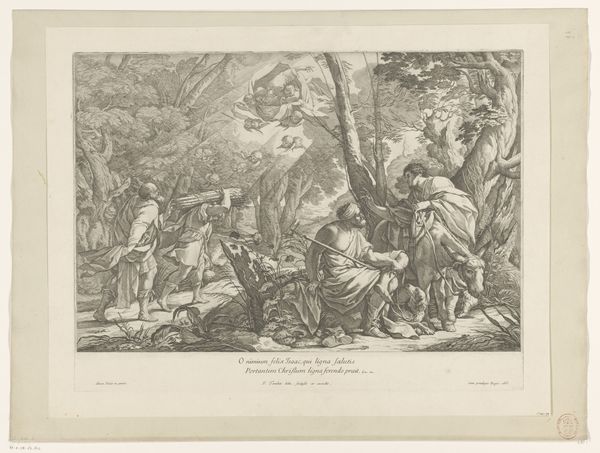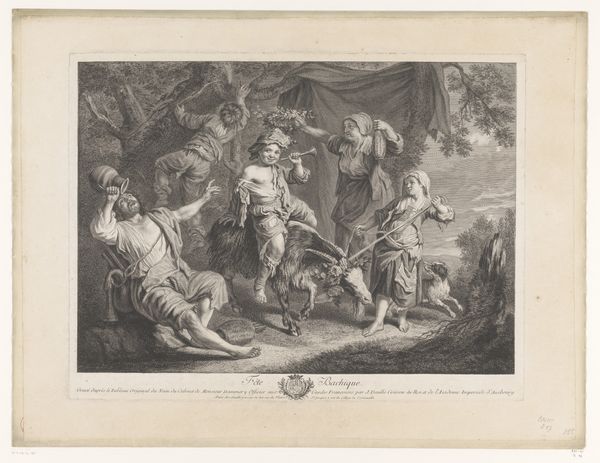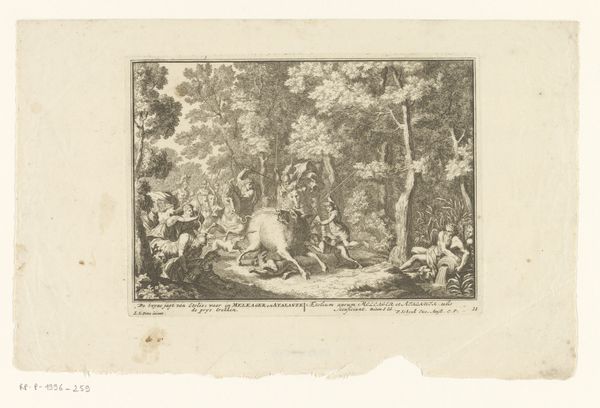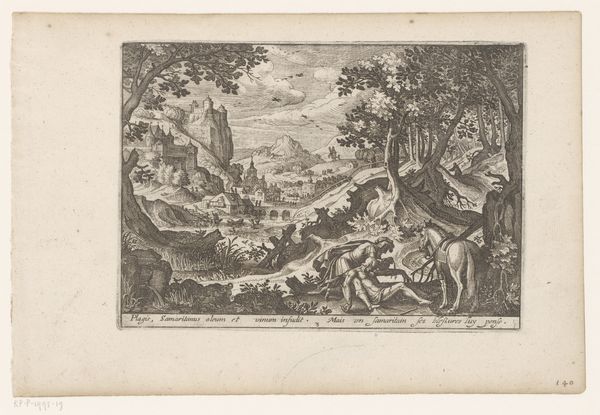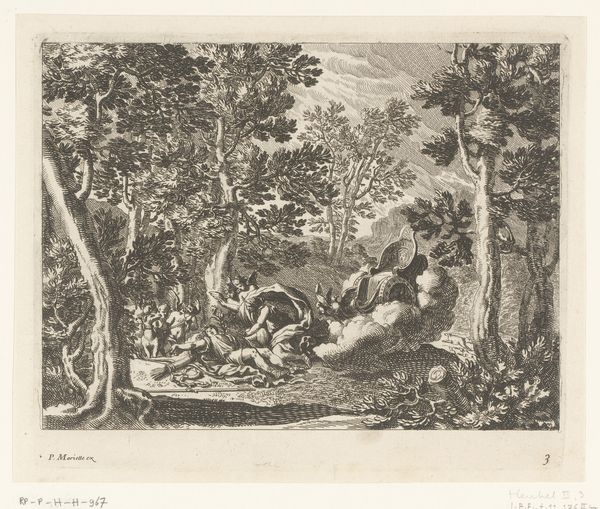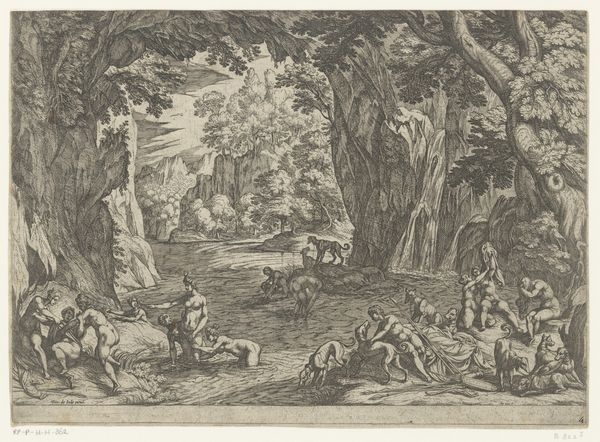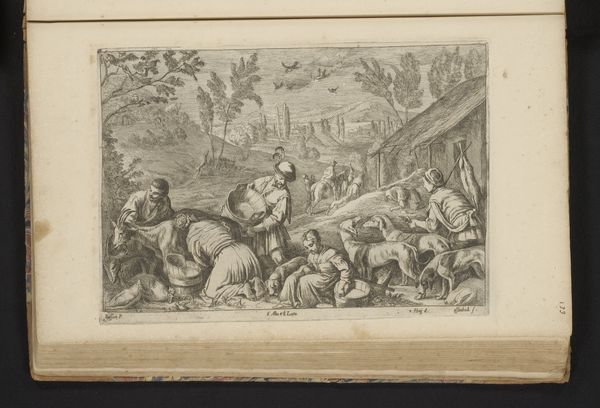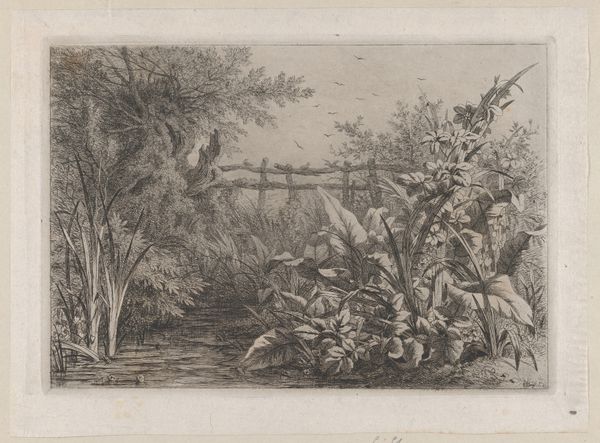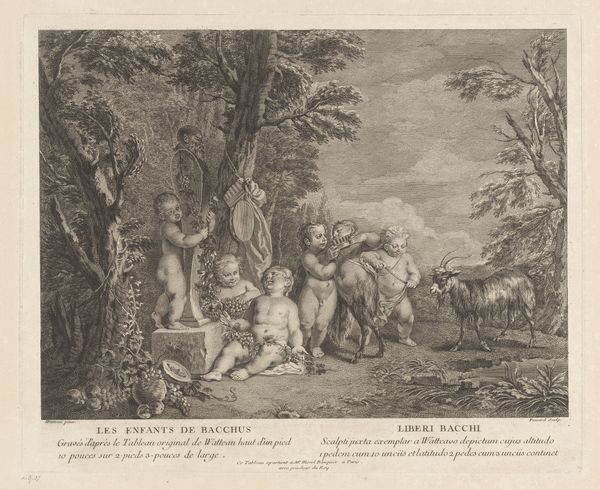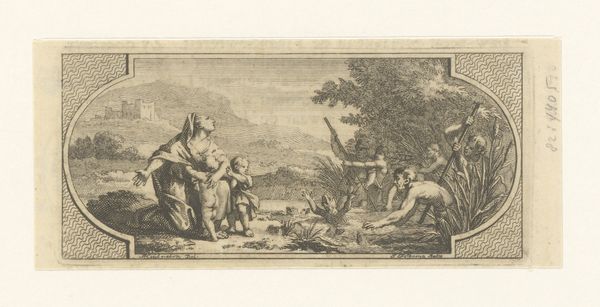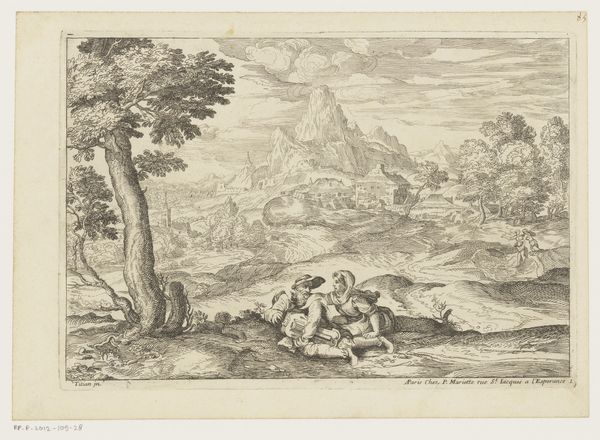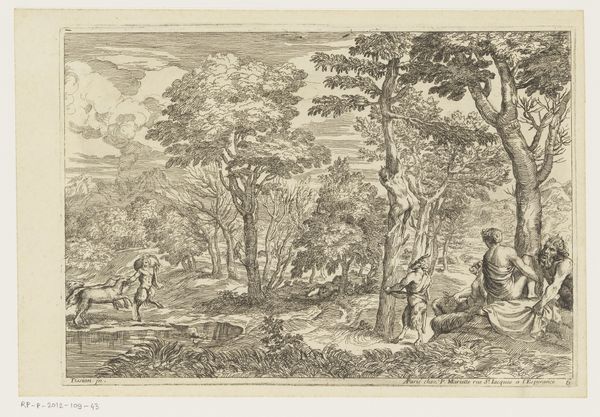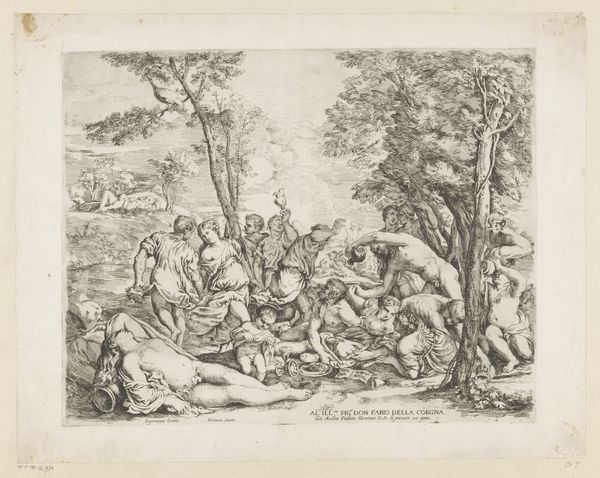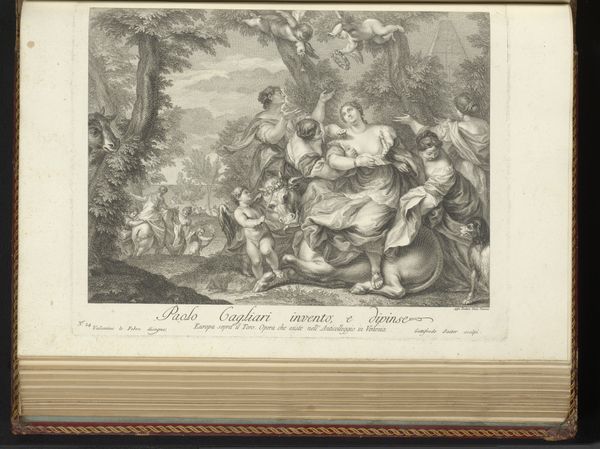
engraving
#
aged paper
#
narrative-art
#
baroque
#
old engraving style
#
personal sketchbook
#
sketchbook drawing
#
genre-painting
#
engraving
Dimensions: height 166 mm, width 206 mm
Copyright: Rijks Museum: Open Domain
Claude Gillot made this etching, "Ape Speaking to a Group of Turkeys," in France sometime around the turn of the 18th century. It shows a human-like ape standing in a basket and lecturing to a crowd of turkeys, with another bird flying overhead. Images such as this one are often allegorical. They create meaning by using animal figures to comment on social and political issues, like power imbalances. Here, the artist might be critiquing the social structure of his time. Is he suggesting that the turkeys, like the common people, are easily manipulated by charismatic but ultimately self-serving leaders? Or is he satirizing the pomposity of authority figures who, like the ape, may not be as wise as they seem? To better understand Gillot's intentions, we can look at the political and social history of France during his lifetime. How did the rising power of the monarchy affect social structure? What were the major political and philosophical ideas circulating at the time? Looking into these questions might give us a better understanding of the meaning of this curious image.
Comments
No comments
Be the first to comment and join the conversation on the ultimate creative platform.
